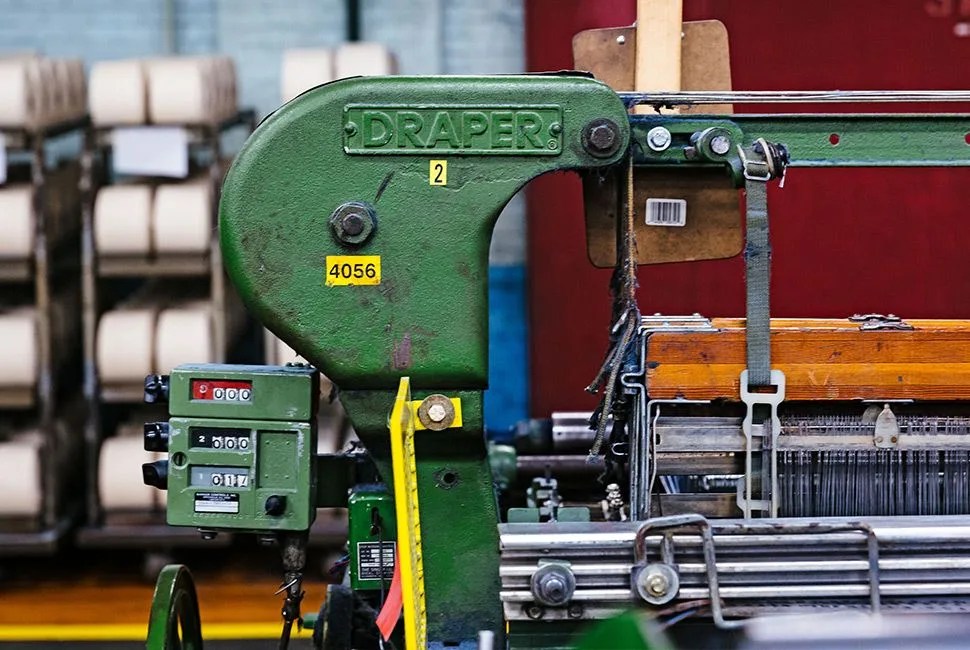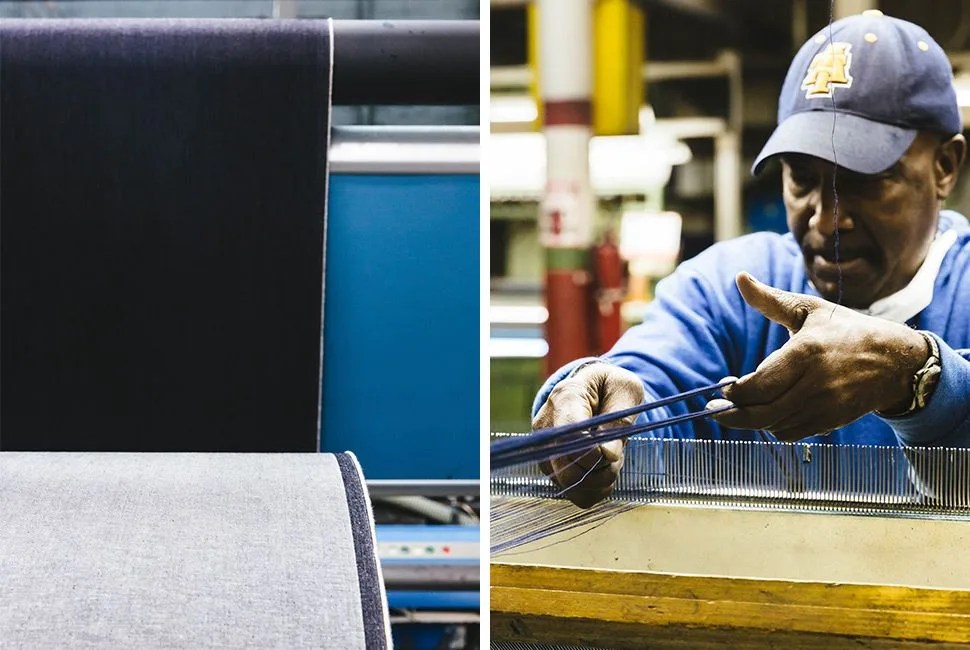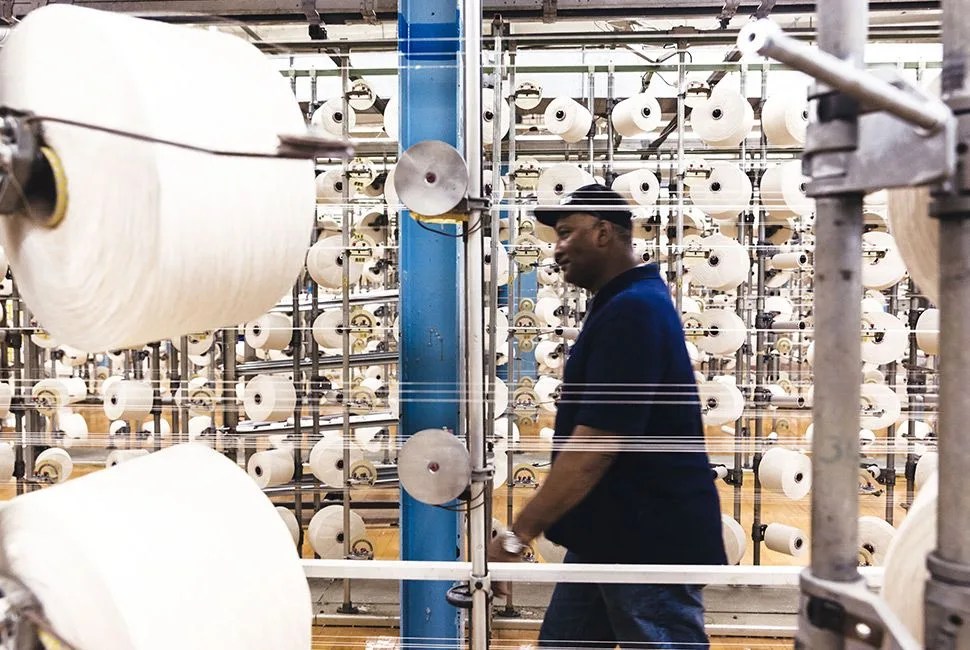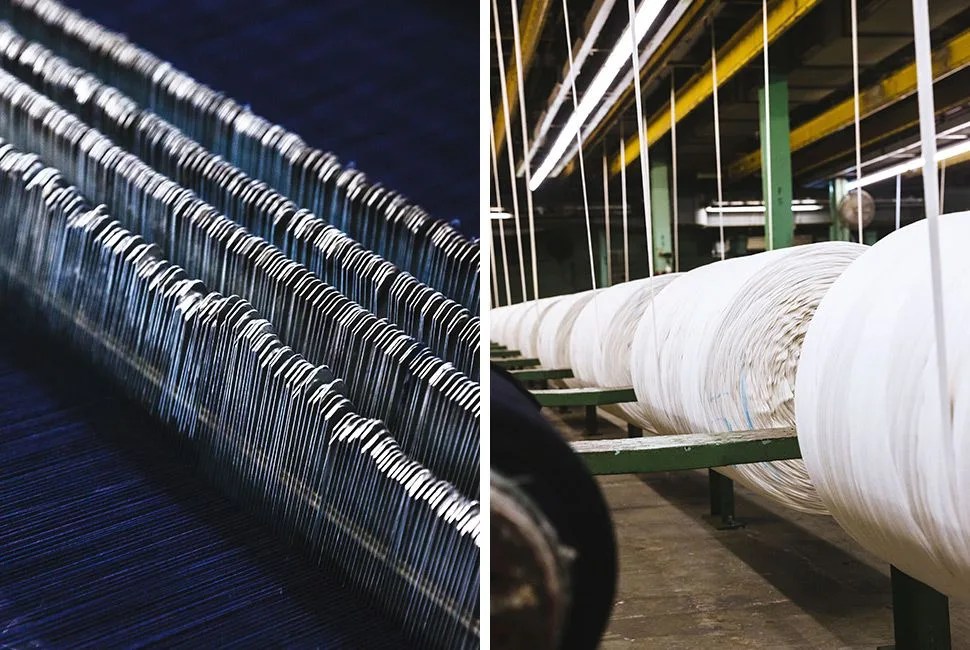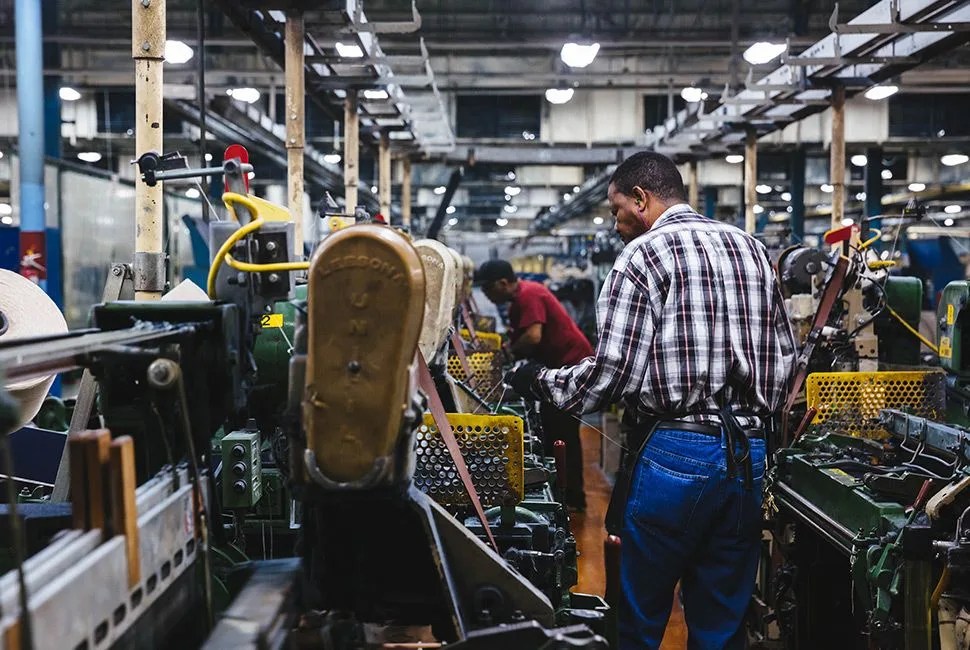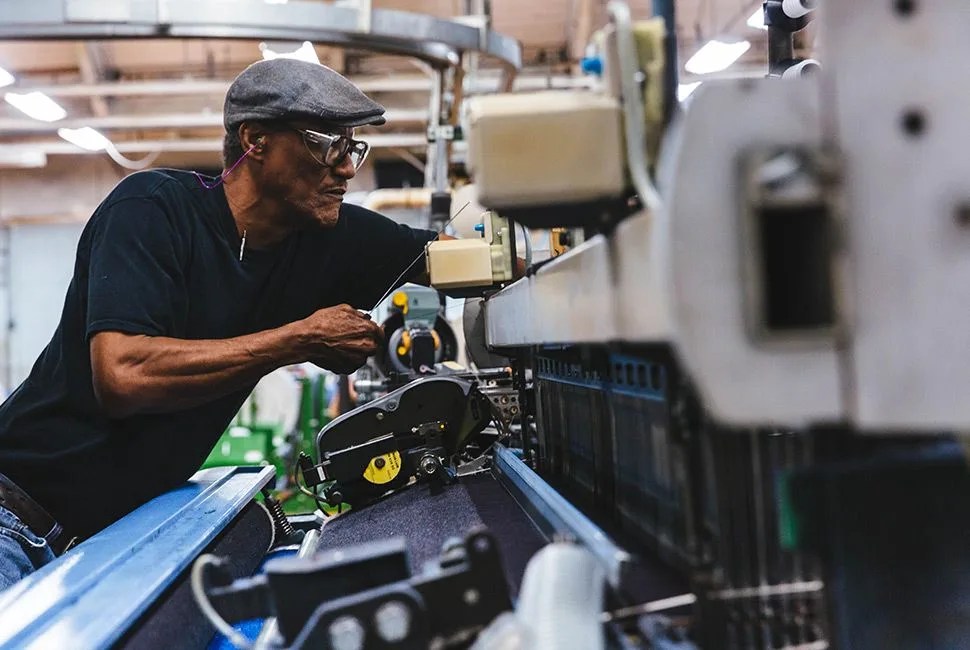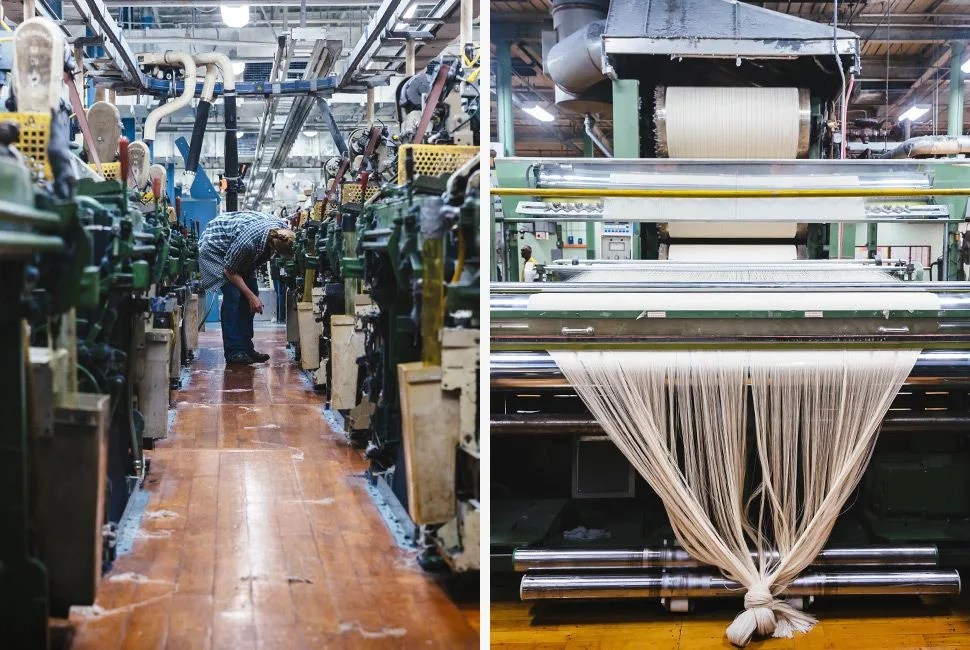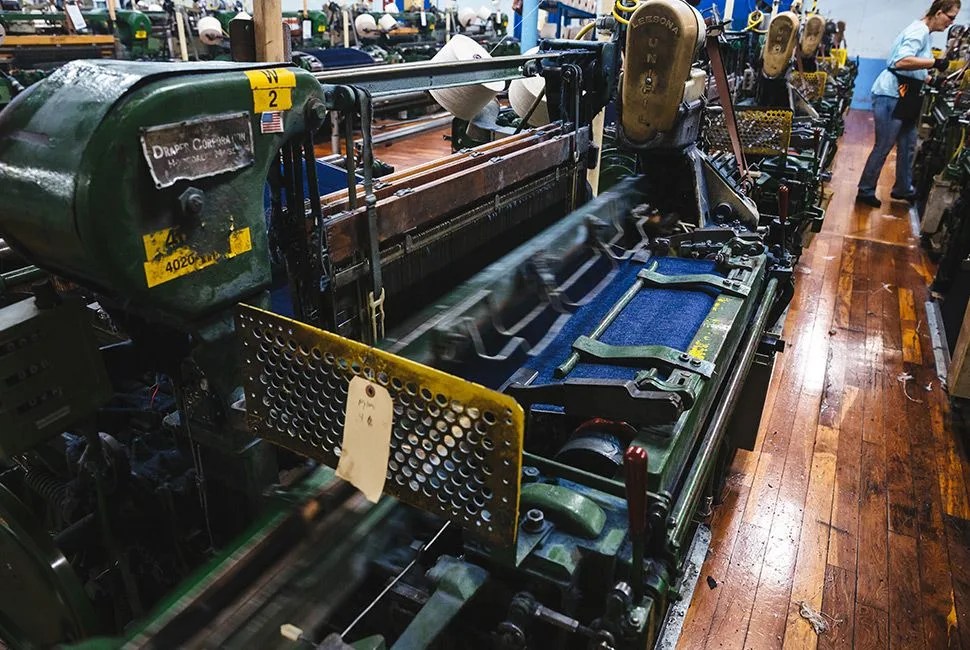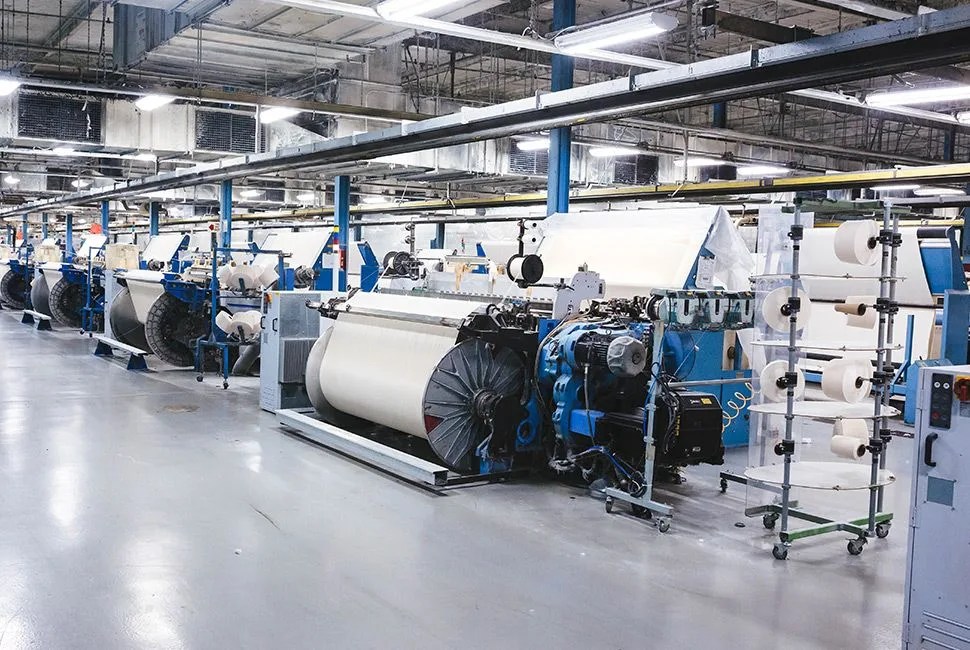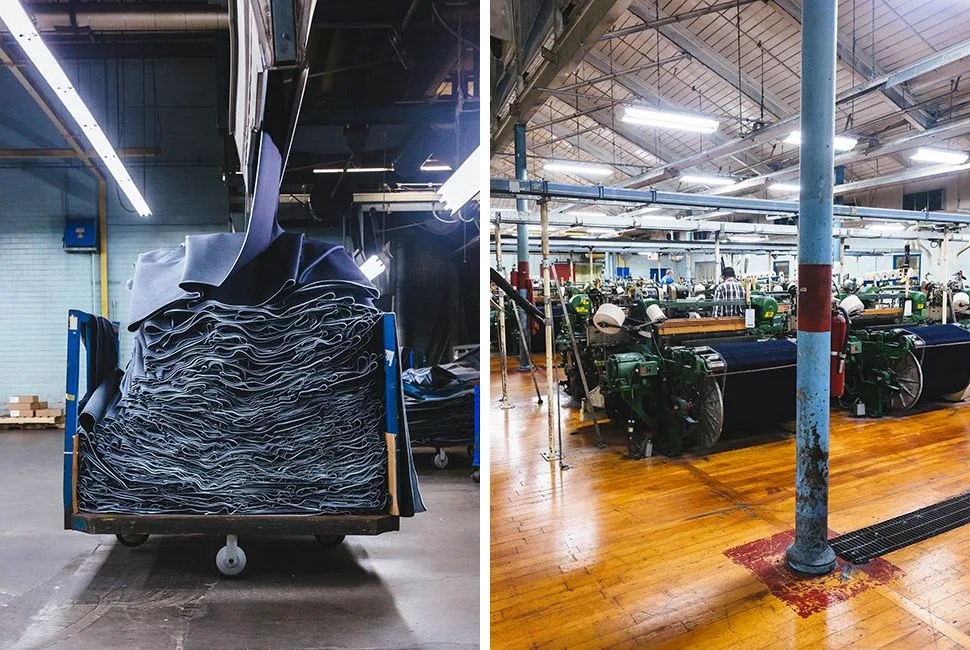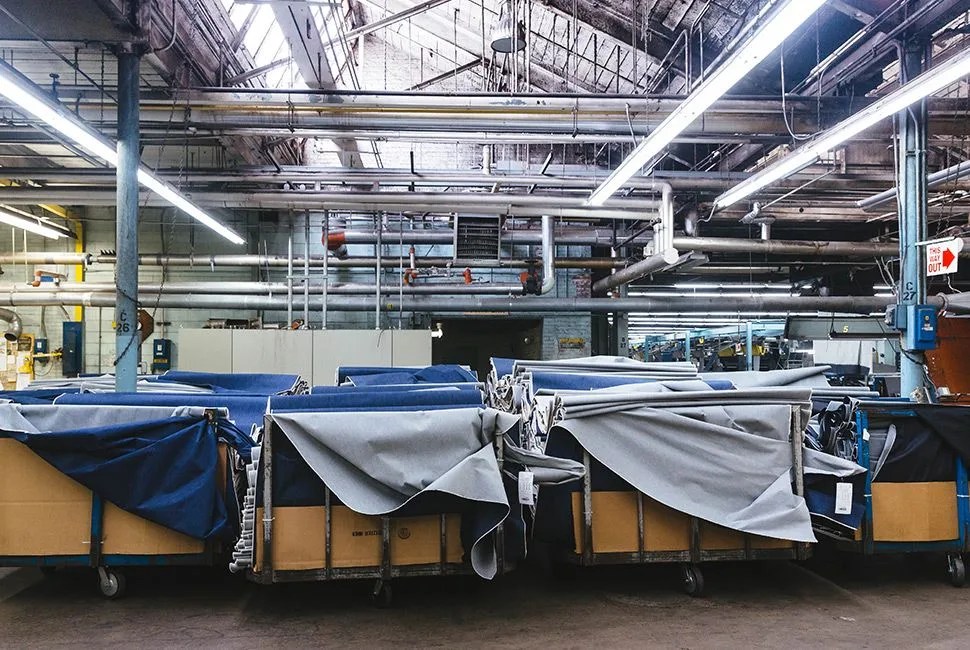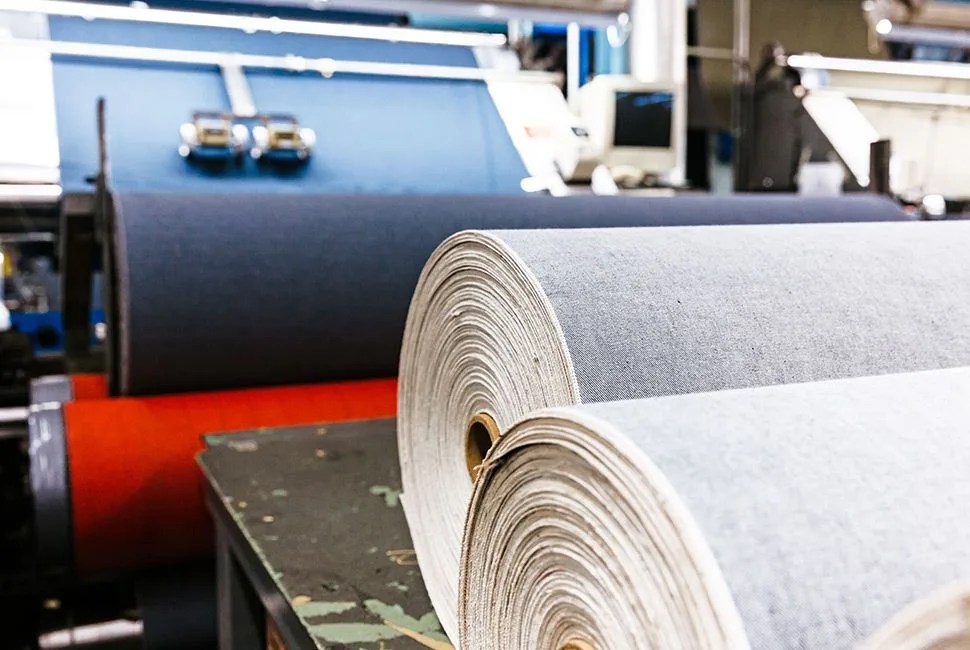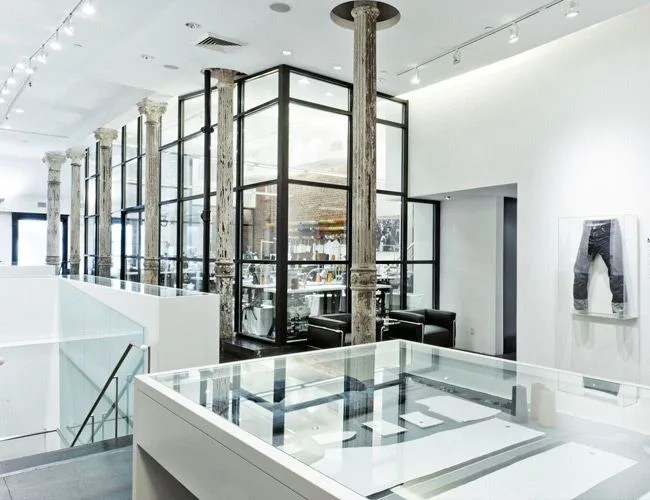13 photos
When Scott Morrison traveled to Japan to check out denim in the ‘90s, he had one question: “Why aren’t we making this type of product in America?” At the time, the premium denim market didn’t exist. American denim producers were focusing on manufacturing large quantities of fabric for big name brands. Morrison consequently immersed himself in the world of denim — first founding Paper Denim & Cloth in 1999, then Earnest Sewn in 2004, and then 3×1 in 2011. He became an integral part of the changing denim market. 20 years ago, denim brands focused mainly on their branding. In the past decade that’s shifted, and now the focus rests with the quality of the denim. This change has helped bring back selvedge denim production to the place that started it over 100 years ago: America.
Selvedge denim’s strongest roots can be traced back over 100 years to Cone Mills in North Carolina. Founded in 1981 by Moses and Caesar Cone, Cone Mills became the largest producer of denim in the world by 1908, and began supplying fabric for Levi’s in 1915. “Cone has the most historical significance of any producer in the world of denim,” Morrison said. Shuttle looms were the principal means of denim production in the US for over 50 years, but then, as denim became more popular, manufacturing changed to meet consumer demands. Newer looms that could produce a wider-width fabric more efficiently phased out the older shuttle looms. By the latter decades of the 20th century, the American consumer was focused on buying cheaper denim, and mills had to cater to brand’s needs.
While the American denim market homogenized to accommodate big brands, the Japanese market focused on smaller artisan brands. The Japanese mills studied historical Levi’s garments and originally based their production on an American model. When American designers traveled to Japan in the ‘90s, they rediscovered the unique qualities of selvedge denim, and wanted to bring it back. In the mid-’90s, fewer than five US brands were sourcing selvedge denim. Today, the American selvedge market supplies over 100 brands. “The thing that’s changed over the last twenty years is that our generations are embracing the idea that old can be cool,” Morrison noted.
“The thing that’s changed over the last twenty years is that our generations are embracing the idea that old can be cool.”
In Greensboro, North Carolina, Cone Mills’ historic White Oak plant is a prime example. First opened in 1905, the plant once had 3,000 Draper shuttle looms producing selvedge denim. The plant is a cradle of denim innovation — their long-chain dye range was patented in 1921, and recent innovations include stretch denim, durable dyneema-blend denim, and fabrics that are breathable, moisture-wicking, water-repellent and stain-repellent. In White Oak’s weave room, there is a stark contrast between old and new. Modern rapier and air-jet looms occupy the same space as a battalion of vintage shuttle looms from the ‘40s.


